There are an abundance of terms used when talking about a warehouse management system (WMS). Each of those terms could also have varied definitions based on who you ask. In order to sort this debacle out, we have listed some key terms that you should know when it comes to Warehouse, Inventory, and Distribution Management. Being familiar with these terms and their definitions could help your organization be more flexible and invariably save money. Here are the top 10 terms (arranged in alphabetical order) and their definitions:
- Advanced Shipping Notice (ASN) – Detailed shipment information transmitted by the shipper to a customer or consignee in advance of delivery, which designates the contents (individual products and quantities of each) and nature of the shipment. In Electronic Data Interchange (EDI) standards, this is referred to as an 856 transaction. This may also include carrier and shipment specifics, including time of shipment and expected time of arrival. The ASN data can be valuable in providing digital knowledge about what is in the shipment, and can be used to eliminate manual data entry.
- Cross Docking– A distribution system in which merchandise received at the warehouse or distribution center is not put away, but instead is readied for shipment to retail stores. Cross docking requires close synchronization of all inbound and outbound shipment movements. By eliminating the put-away, storage and selection operations, it can significantly reduce distribution costs.
- Cycle Counting– An inventory control and management practice that refers to a process of regularly scheduled inventory counts (usually daily) that “cycles” through your inventory. Users determine how often certain items or locations are counted using frequency or dollar values segregated into “ABC” categories. Cycle counting can eliminate the need for wall to wall physical counts and can maintain a higher level of on-going accuracy.
- License Plate– A pallet tag. Refers to a uniquely numbered sticker placed on a pallet of product. Typically contains information about product on the pallet.
- Replenishment– The process of moving or re-supplying inventory from a reserve (or upstream) storage location to a primary (or downstream) storage or picking location, or to another mode of storage in which parking is performed.
- Radio Frequency Data Collection (RFDC)-Is used to communicate from a mobile location to a host computer in real-time. RF terminals provide a wireless data entry and/or display with an RF base station which is connected to a host computer. RFDC provides an accurate, real-time system by allowing the host computer to interactively verify and update data. In addition, it eliminates paperwork, increases customer service, and reduces space requirements. RFDC can substantially improve an operation’s efficiency.
- Serial Shipping Container Code (SSCC)- An 18-character identification number used to identify containers including pallets and boxes primarily for containers which are a part of a shipment covered by an Automated Shipment Notice.
- Task Interleaving– A method of combining warehouse picking and put away. Warehouse Management Systems use logic to direct (typically with an RF terminal) a lift truck operator to put away a pallet en route to the next pick. The idea is to reduce “deadheading” or driving empty material handling equipment around the warehouse.
- Voice Directed or Voice Activated– Systems which guide users such as warehouse personnel via voice commands.
- Zone Picking– A method of picking orders where a warehouse is divided into several pick zones with order pickers assigned to a specific zone and only picking the items in that zone, orders are moved from one zone to the next (usually on conveyor systems) as they are picked (also known as “pick-and-pass”).
